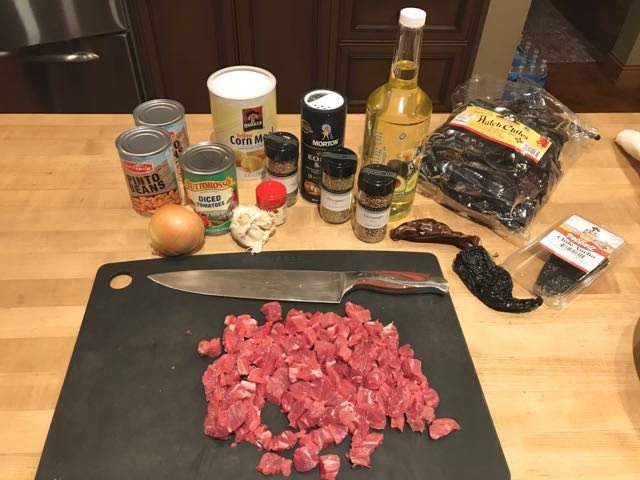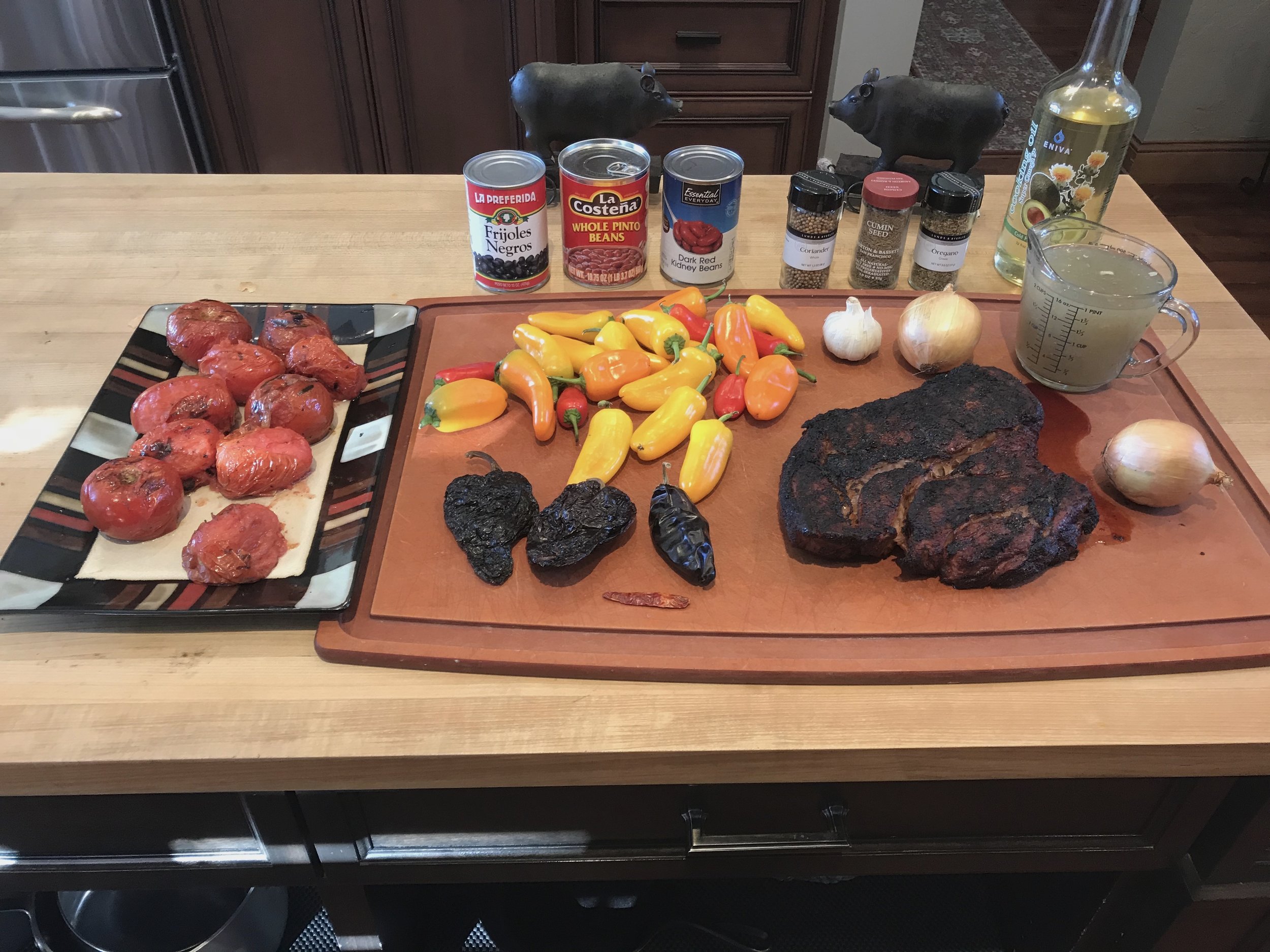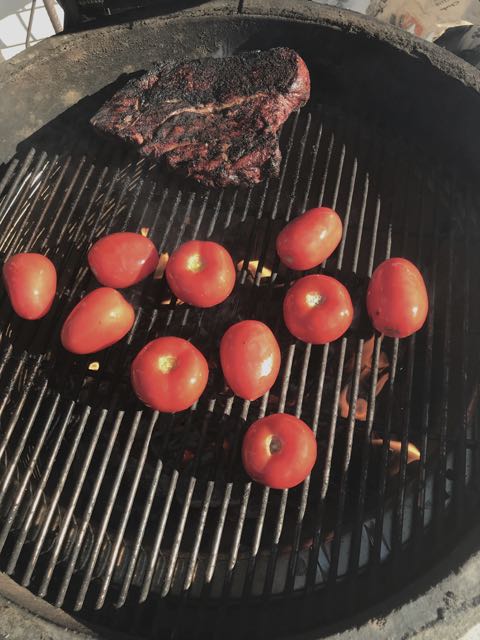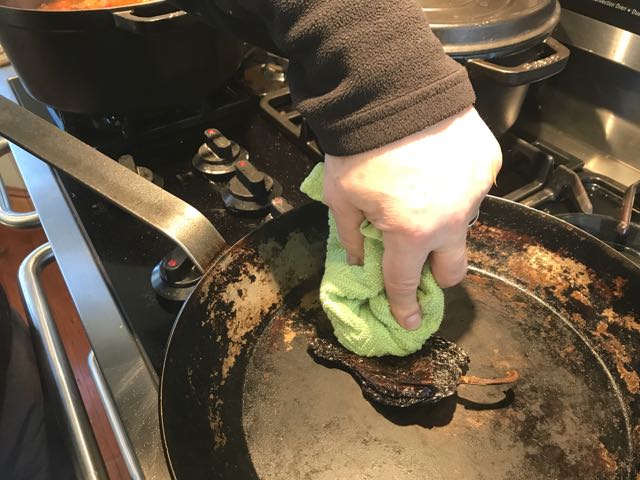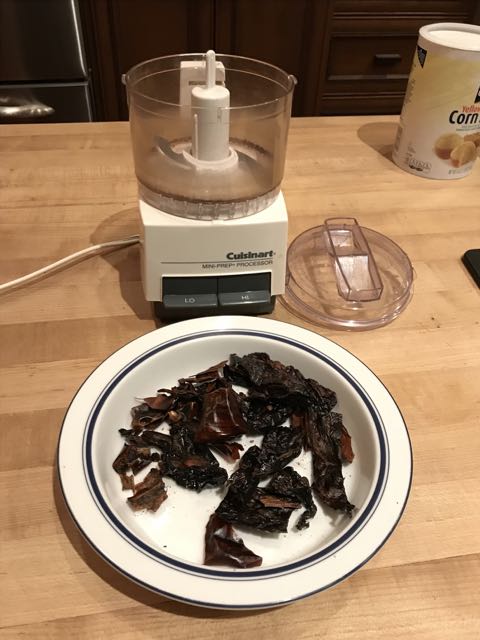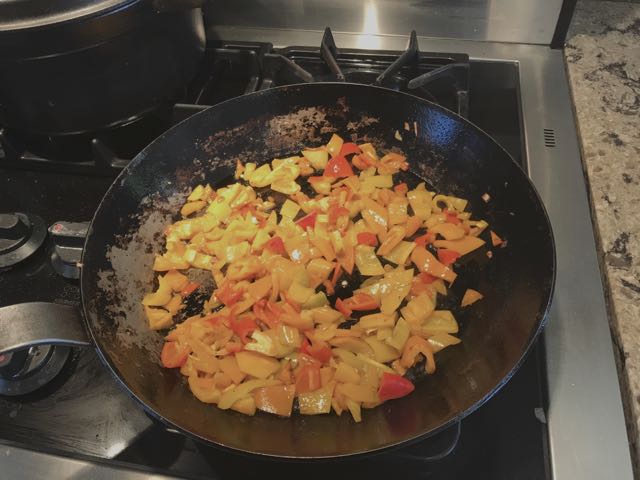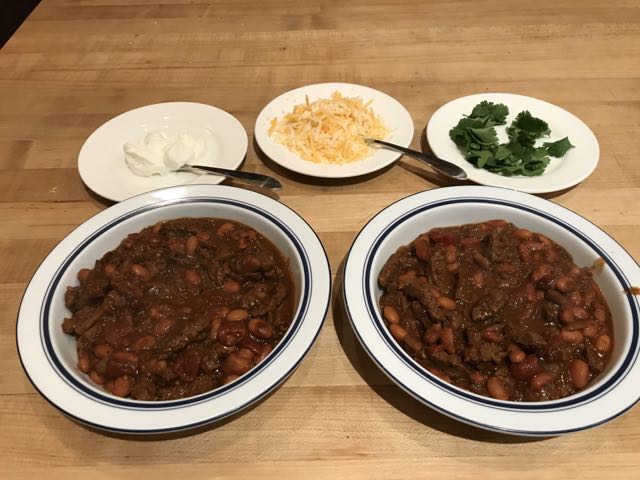The Bones of Chili
by Ross Bowen, Tastemaker in Residence
There are lots of ways to make chili. The easiest way is to pick up pre-mixed spices, a pound of hamburger, and maybe a can of tomatoes and an onion. You’ll probably like the result, too.
But we can do better. Being known as a good chili maker is a reputation all of us want, along with grilling the perfect steak and being able to smoke a rack of ribs. This is a core dish, one that you will be known by. Perfect it.
There are six major components that make up a chili. These choices determine the flavor and texture of the chili. These are the six major decision points:
- Meat
- Beans
- Chiles
- Spices
- Adjuncts
- Garnishes
Meat choices are wide, but usually beef is chosen. Here are some options:
Hamburger - Most common. Brown the hamburger before use, and spend time to break apart the larger chunks. Usually you are directed to drain the fat, but I don’t. Fat is flavorful in food.
Ground turkey – the same as hamburger, but it sounds healthier. A little more of a blank canvas. If making turkey chili, you are probably expected to drain the fat.
Beef cubes – pre-cut by the butcher for stews and such. Sear in a pan before use. Remove any gristle or tough looking membranes that you see.
Blade steak or other cut – Because chili needs to simmer, the most tender steaks aren’t needed in chili. Place the piece of meat in the freezer for half an hour or so. This will make the cut easier to handle and cut into chunks. Sear the chunks as above.
Smoked roast – this is probably the best choice. Put the meat on the smoker for an hour or so, with hardwood charcoal and wood chunks like hickory, pecan, or cherry. Cook until the outside looks done, but it does not need to come off the grill well done at this stage. Allow to cool so that you can handle it, then cut into chunks.
Beans are a fundamental component. For those that avoid beans, increase the adjunct additions.
Kidney beans – the most popular choice. Adds good color to the chili.
Pinto beans – also popular, particularly in the Southwest.
Frijoles Negro (Black beans)
Dried vs. Canned - if dried, they need some time to soak, so you’ll need to plan ahead. Canned are easy. Drain the liquid from the beans before use
Chiles
There are many kinds of chiles. The chiles you choose will determine how spicy the meal will be. Dried chiles make the core of the chili powder in the recipe. Here is a list of some of the most common chiles and their “Scoville” scores for heat. Scoville scores will vary from pepper to pepper so expect the unexpected.
Anaheim 1,000
Poblano 2,000
Hatch 3,000
Jalapeño 10,000 use fresh
Arbol 40,000
Ghost 1,000,000 do not use
Seed, tear into pieces, and roast your dried peppers. Grind to a fine consistency.
Be sure to record how hot you made you chili by adding the Scoville scores. The next time you prepare this you’ll know whether to add or subtract heat.
Spices
Two spices are at the heart of the chili flavor - cumin and coriander. Do not cut this corner. Use the freshest whole spices you have. Instead of ground cumin and coriander, start with the whole spice. Toast them on a skillet until they start to smoke, like we did the chile flesh, then grind in a mortar and pestle or a food processor. Oregano and cocoa are two other good additions.
Adjuncts
- Sautéed onion and garlic are must haves, along with chopped tomatoes.
- The tomatoes can be canned. I prefer to char grill mine. Remove the burnt skin and chop before adding to the pot.
- Bell peppers or sweet peppers of various colors. Chop and saute.
Garnishes
- Sour cream is a great garnish, especially when used to tame an otherwise too spicy chili.
- Grated cheese and cilantro are good choices too.
Here’s the chili we whipped while watching the playoffs. It’s not particularly hot. We used a chuck roast. Use a brisket if you have more time.
Ingredients
1 lb. blade steak
2 14-oz cans of pinto beans
I large dried ancho pepper
1 large dried Hatch pepper
One large yellow onion, chopped
2 cloves garlic, pushed through a garlic press
1 14-ounce can crushed tomatoes
Beef or chicken stock
Cornmeal
1 Tbsp cumin
1 tsp coriander seed
1 Tbsp oregano
1/4 tsp cayenne pepper
Instructions
- Throw the steak in a snowbank for about thirty minutes when it is 0 F outside. If not in Minnesota, place in freezer instead. This makes it easy to cut into small cubes. Cut meat into cubes about ¾ inch each.
- Sauté meat in oil until brown in a large heavy pot, like a Dutch oven. I use a high smoke point oil made by Eniva, made of avocado and safflower oils. Vegetable oil or canola oil work fine too.
- Set the meat aside. Add more oil if necessary, and add add the chopped onion and cook. Scrape the bottom for any browning from the meat. Add the garlic after a few minutes. Garlic cooks faster than onion. Burned garlic never did anybody any good.
- Add the beef, tomatoes, and beans into the pot, along with three cups of beef stock (chicken stock will work). Keep on low medium heat and turn to the spices.
- Choose your dried peppers. We used an ancho pepper and a Hatch pepper, each about four inches long and one inch wide. Remove the seeds and top of pepper, then shred into smaller pieces. Place on a hot skillet and punch them around continuously, until they start to smoke, a few minutes. Next, place in a food processor until it becomes as atomized as possible. Add to chili pot. The seeds are one of the hottest parts. They can be added, or start of with a different, hotter set of peppers.
- For the spices, take the cumin and coriander and toast on the hot skillet. Place in the food processor and pulse until broken down. Add the oregano and the carefully measured cayenne pepper, and add to chili. Never free pour cayenne. Too much heat is a hard problem to correct.
- Simmer the chili for a few hours, stirring occasionally, and adding beef stock if more liquid is needed. Add a tablespoon of cornmeal, which will help the chili thicken.
- For garnishes, add sour cream, cheddar cheese, and cilantro. Serve with crackers.
We were happy with this chili. Now that you see the six major components of a chili, you can experiment on your own and make a signature chili. Good luck!

